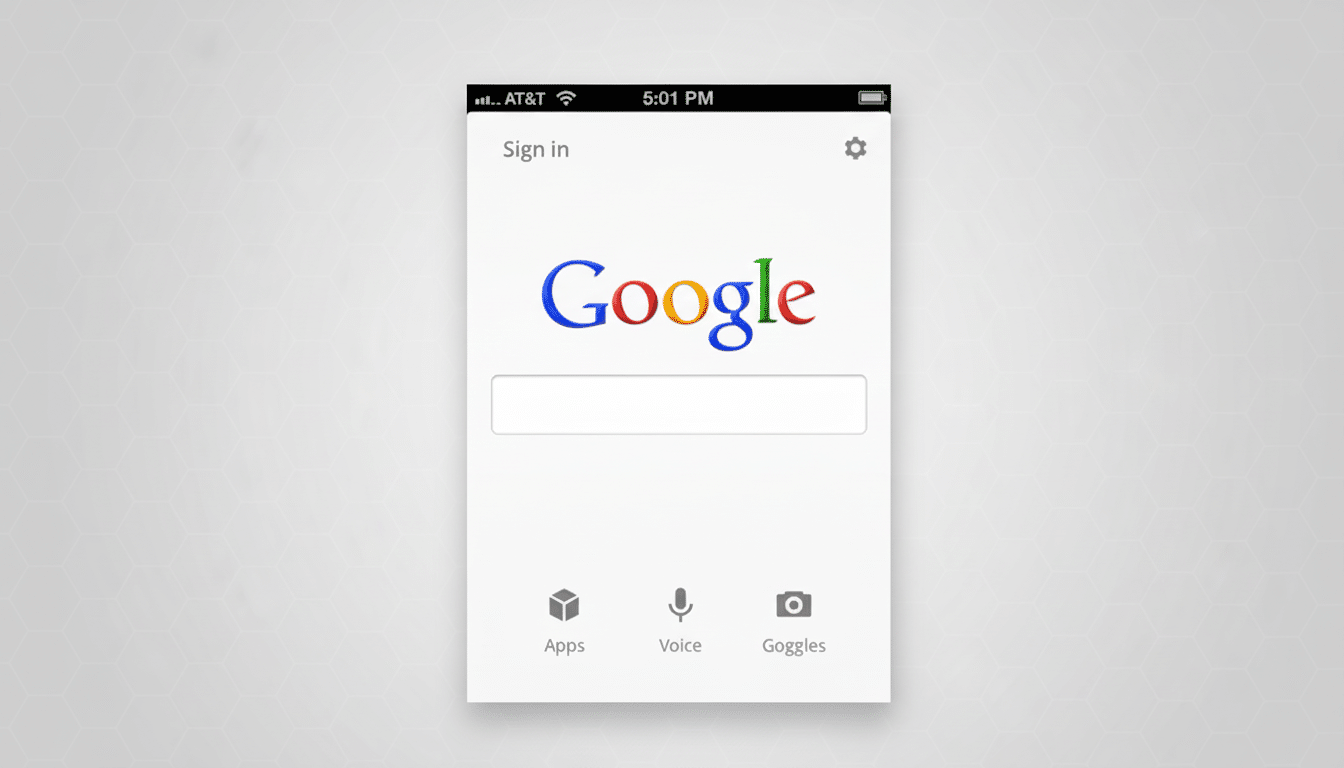Google is launching a new Images section in its mobile Search app that showcases an organized, personalized feed of images categorized for idea discovery, inspiration and planning. The feature rolls out to iOS and Android and directly pits Google against Pinterest’s grip on visual discovery and save-for-later usage.
What Does the New Images Tab in Google Search Do?
An Images icon is added to the bottom navigation in the Google app. Tap it to see a daily-updated bite-size stream of visuals, customized based on your interests — from “Scandi living room layouts” and “Paris weekend itineraries” to “autumn party tablescapes” and “streetwear looks.” The feed mashes browsing and search: you can dive further into related queries, open source pages or save anything you’re interested in to Collections.

Unlike run-of-the-mill image search results associated with a particular query, this tab functions like a constantly maintained inspiration board. It will bolster itself with what it knows about your previous activity and expressed interests, then tirelessly start repopulating the screen with new images that you can explore, organize or revisit.
A Strategic Shot at Visual Discovery by Google
Visual discovery is where intent meets inspiration and inspires action. Pinterest was a force behind that model, with more than 480 million monthly active users in 2024 and robust engagement in such categories as home, fashion, food and travel, the company said in investor disclosures. Google’s aim is that same “I need an idea!” moment — only inside an app that already has huge daily reach and more than a billion installs on Android alone.
Most importantly, Google is able to match a user’s aspirational browsing with in-the-moment searching intent. That mix — what you dream about and what you’re actively querying — gives the company a potent signal graph to recommend specific images and surface content that’s more likely to convert into clicks, saves and purchases.
Monetization and Shopping Potential in Images Tab
The Images tab will certainly become a premium ad surface. One of the tests involving carousel ads in mobile image results indicates that sponsored placements could be integrated with organic tiles. For brands, the format is a natural fit for catalog-driven creative: contemporary living room vignettes linked to products, culinary travel inspiration with bookable services, or recipe imagery connected to shoppable ingredients.
Google has an additional advantage in product data. Its Shopping Graph and Merchant Center feeds will enable shoppable overlays, price comparisons and availability badges to be placed directly inside images. Retail media is only growing, but analysts at Insider Intelligence pointed to visual, commerce-adjacent inventory as a growth engine across major platforms. A dedicated inspiration feed in Google’s marquee app opens a new channel to catch that demand.
How It Stacks Up Against Pinterest’s Core Model
The idea of Pinterest is that it’s organized by boards, creators and a socialistic stratum of saves and shares. Google’s focus is more search-native and less community-forward. Discovery is based on search signals and keyword queries, not recommendations, so there aren’t ways to instantly go viral like through Facebook or Twitter. You’re much more dependent on the kind of content you produce being tuned to what users are looking for than just experimenting in the News Feed. The shift could provide purer answers that show a deeper understanding of who we are. It also ensures creators won’t be as beholden to network effects driving distribution in their feed.
The upside for users: fewer barriers between inspiration and action. If the feed strikes personalization, a tap can leap directly into a source site, a product page or similar searching. If it doesn’t, the backstop is what Google does better than anyone, shaping results through follow-up questions.

What Publishers and Brands Should Do for Images
In a visual-first feed, visibility is based on technical hygiene and compelling creative.
High-quality, vertically conducive images and descriptive alt text along with clean filenames aid in image indexing. For commerce, make sure Merchant Center feeds are up to date and include rich product attributes, pricing and stock. Implement structured data for Products, Recipes, or Articles to be eligible for both richer snippets and possible shoppable treatments.
Think in scenes, not single SKUs: styled rooms, whole outfits and step-by-step recipe shots outperform lone product cutouts when you want to inspire. Offer up clean landing pages that reflect the visual context so users can take action without resistance.
Rollout and What to Watch as Images Tab Expands
The Images tab is coming first to the Google app on iOS and in the U.S. for Android, with more regions to come soon.
Google has not announced any global timeline.
Key signals to watch:
- How quickly ads roll out and in what formats
- The degree to which saved images in Images sync seamlessly with Collections across your devices
- Where the feed meets up with two neighboring surfaces on which Google happens to already surface visual content: Lens and Discover
If Google can transform casual inspiration into measurable shopping and search engagement, it will have opened a new front in its battle with Pinterest—one that exists where users already begin their journeys.

